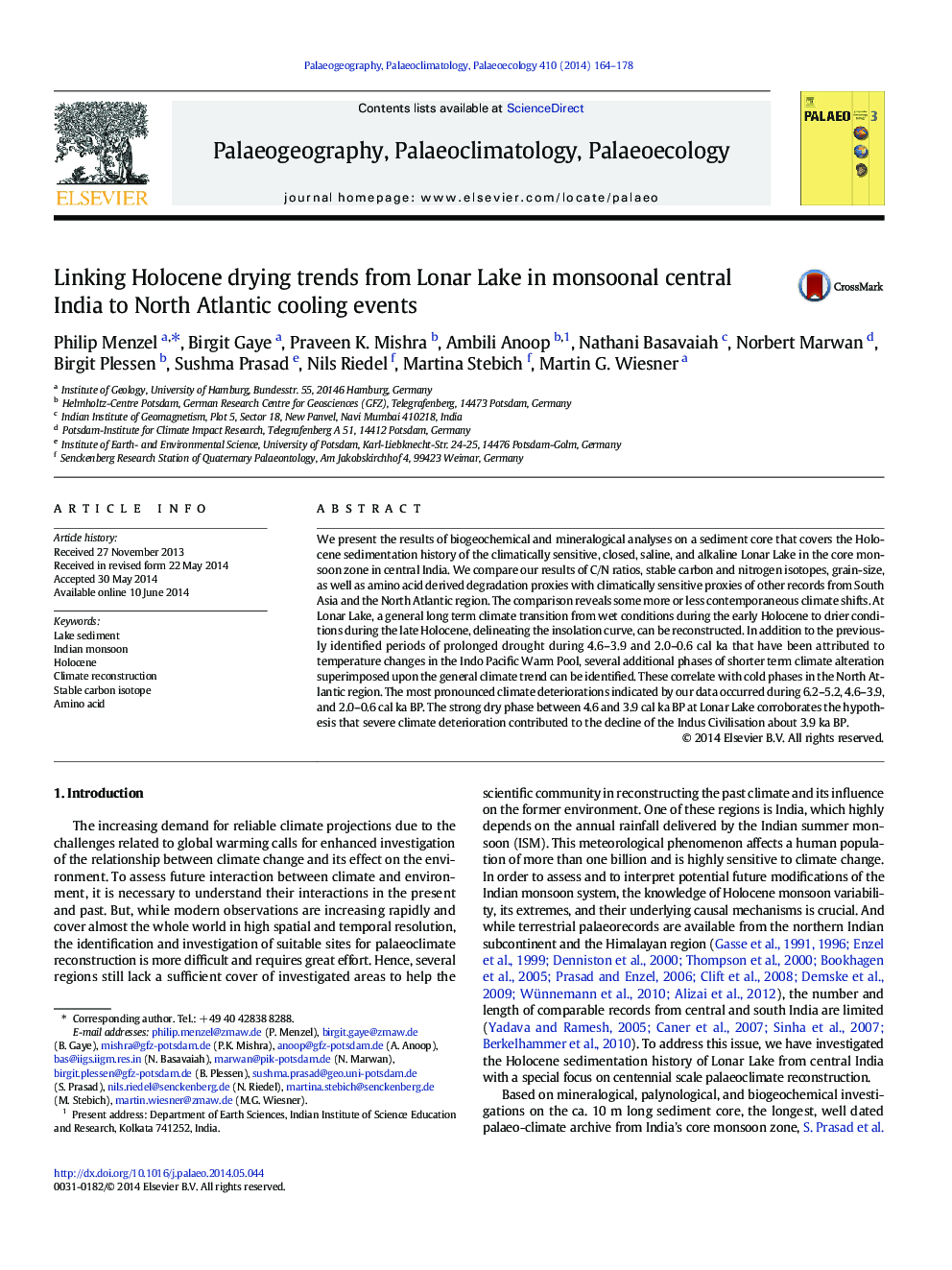| کد مقاله | کد نشریه | سال انتشار | مقاله انگلیسی | نسخه تمام متن |
|---|---|---|---|---|
| 4466117 | 1622180 | 2014 | 15 صفحه PDF | دانلود رایگان |

• We analysed the biogeochemistry of Holocene sediments from Lonar Lake in India.
• We reconstructed several centennial scale climate shifts.
• The climate shifts correlate with North Atlantic climate variability.
• Changes in solar activity seem to cause the centennial climate shifts.
• Strong aridity at Lonar coincides with the decline of the Harappan Civilisation.
We present the results of biogeochemical and mineralogical analyses on a sediment core that covers the Holocene sedimentation history of the climatically sensitive, closed, saline, and alkaline Lonar Lake in the core monsoon zone in central India. We compare our results of C/N ratios, stable carbon and nitrogen isotopes, grain-size, as well as amino acid derived degradation proxies with climatically sensitive proxies of other records from South Asia and the North Atlantic region. The comparison reveals some more or less contemporaneous climate shifts. At Lonar Lake, a general long term climate transition from wet conditions during the early Holocene to drier conditions during the late Holocene, delineating the insolation curve, can be reconstructed. In addition to the previously identified periods of prolonged drought during 4.6–3.9 and 2.0–0.6 cal ka that have been attributed to temperature changes in the Indo Pacific Warm Pool, several additional phases of shorter term climate alteration superimposed upon the general climate trend can be identified. These correlate with cold phases in the North Atlantic region. The most pronounced climate deteriorations indicated by our data occurred during 6.2–5.2, 4.6–3.9, and 2.0–0.6 cal ka BP. The strong dry phase between 4.6 and 3.9 cal ka BP at Lonar Lake corroborates the hypothesis that severe climate deterioration contributed to the decline of the Indus Civilisation about 3.9 ka BP.
Journal: Palaeogeography, Palaeoclimatology, Palaeoecology - Volume 410, 15 September 2014, Pages 164–178